San Diego, Finally!
The team's plans were to stay in the great resort, the del Coronado Hotel outside of San Diego, across the San Diego Bay from the city.
The del Coronado, know simply as "The Del," was built in 1888 and was situated on the island of Coronado, directly on, and facing the Pacific Ocean. The authorities back in Danville, in planning the great trip to the West, had as a constant the desire to make the excursion "first class," and "fun."
The Del met both criteria, and then some.
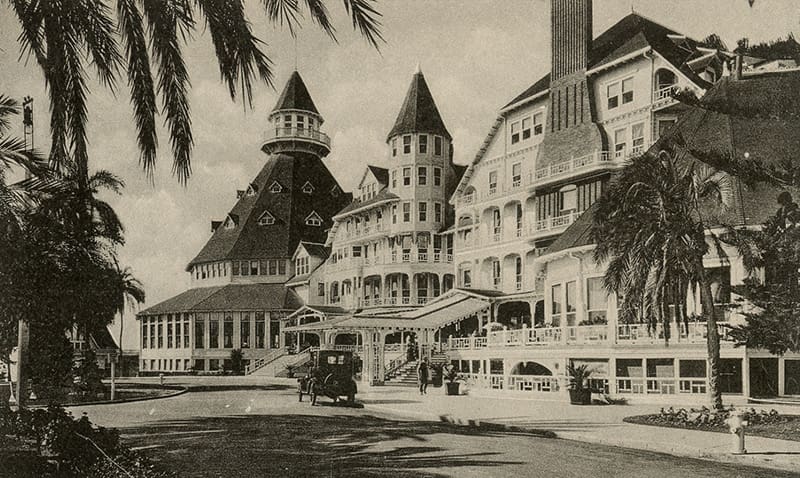
The del Coronado, a favorite destination for those who visited the San Diego area
The organizers of the Christmas Bowl were so determined to be the perfect hosts for Centre that they had the manager of The Del, W.A. Turquand, take the train from San Diego up to Los Angeles so that he could meet with the team late on Thursday evening, after they had re-boarded the "Cowdray. "Turquand's purpose was to introduce the players to his hotel, and to make certain that any special requests were met by the staff.
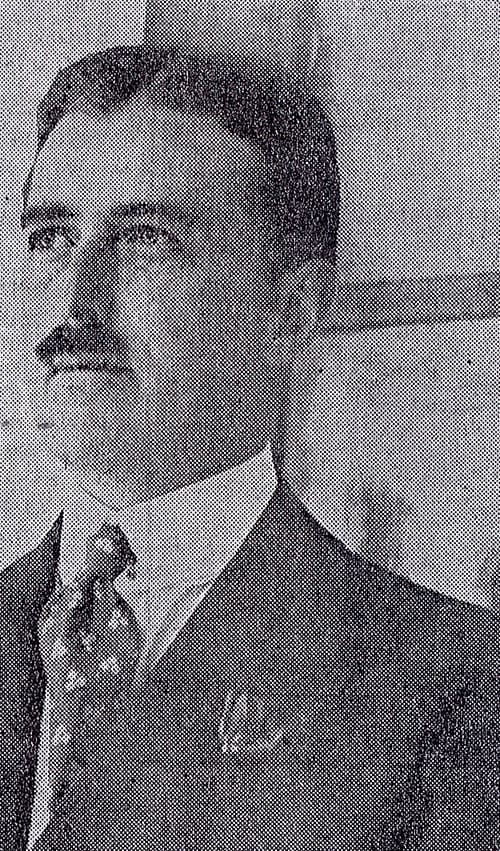
W. A. Turquand, manager of the del Coronado Hotel
The manager wanted to make certain that everyone knew how much of an honor it was for the team to have picked The Del, and "please feel free to use our facility in any way that you may wish. Your pleasure is our constant goal."
"Darn nice of you," was Red's reply, and everyone nodded in agreement.
After the meeting with Turquand, the Colonels had turned in for the last segment of the journey to San Diego, an overnight run to their host city, arrival time, 8:00 A.M. on December 23. It would have been, again allowing for the time differential, just over 6 hours short of a week since they left Danville.
Robert E. Hughes, head of the San Diego Chamber of Commerce, led the delegation which lined up at the station to meet and cheer the Colonels.
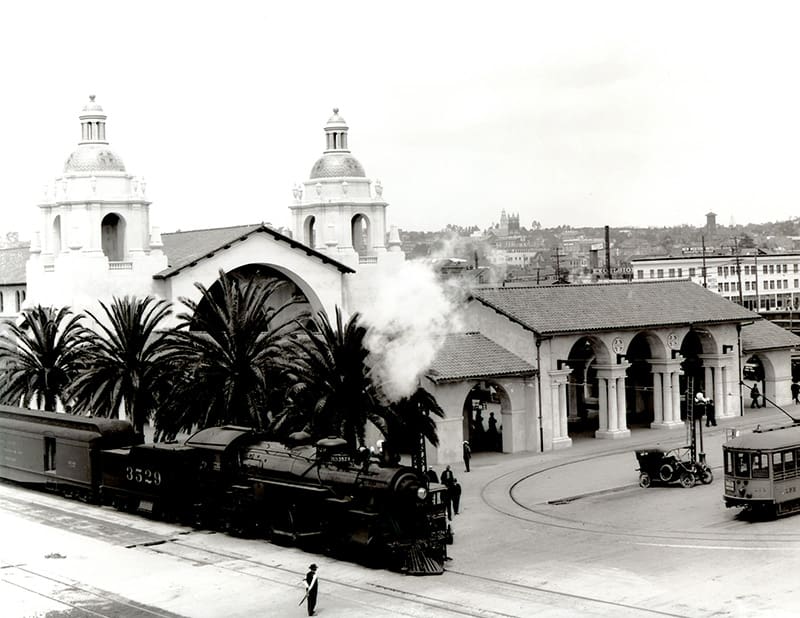
Arrival in San Diego
From The San Diego "Sun"-

Kentucky State Society which was with the Colonels throughout their stay
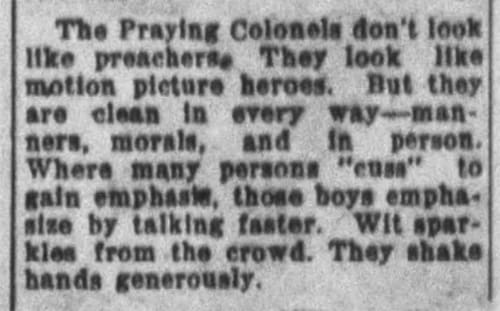
Reporter's opinion of the team when it disembarked
The Centre team would be transported from the train terminal to the wharf for the trip on a ferry across the Bay.

The ferry which took the Colonels across the bay to the del Coronado
( Until 1969, the only way to get to Coronado Island was by water. In August of that year, a beautiful, arching bridge was opened to traffic. I drove over it in visiting the Coronado while researching the book in 2007. )
Jop sent a report back to Louisville and Danville to keep the fans of the team up to date on how the trip was progressing.
The players have been given the most spacious and preferred rooms on the ground floor, and many of the biggest battleships are anchored at the great San Diego Naval Base and may be seen from the verandas and guest room windows.
The San Diego "Union," the morning paper here, turned out a Centre College edition today. The entire front page and three pages of the sports were devoted to the Colonels with attractive layouts and interesting narratives. Southern California has gone wild over the coming game, and with Centre the first to arrive, many neutrals have already announced they are pulling for the Colonels.
During registration at The Del, each member of the team was given a packet, an indication that their hosts were "pulling out all of the stops," as Jop reported. Then it was off to a great breakfast in the arched dining room.
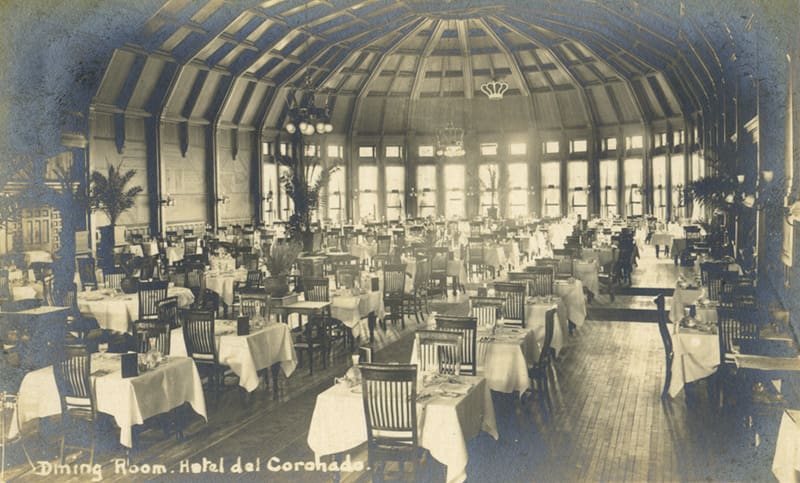
Dining room where the Colonels opened their welcome packets
"Well, look at this!"
Hump opened the envelope which he'd been given at the front desk, trying to look at the contents between bites of food.
"Wait until they see this back in Owensboro! I'm been made a member of the Coronado Country Club, the San Diego Country Club, the University Club and the C-u-y- some other club, whatever it is."
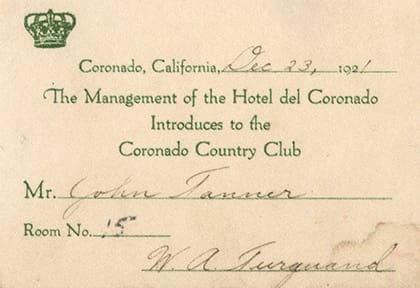
Hump Tanner's room assignment ( 15 ) and membership cards presented by the San Diego organizing committee after arriving at the del Coronado

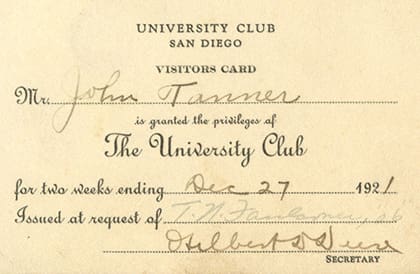
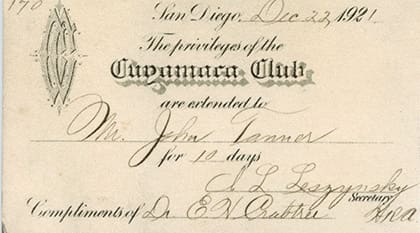
It was the Cuyamaca Club, a social club founded in 1887, and situated atop the Union Building downtown since 1909. It wasn't exactly that the Colonels were going to be able to take advantage of their memberships, but it a wonderful gesture on the part of the San Diego committee, and many of the players proudly showed off their membership cards upon their return home, and some still had them in their wallets decades later, as a reminder when they were so appreciated and ruled the world of college football.
( I was with my father sometime in the mid 1950's when we stopped in Owensboro on the way to Dad's going to Louisville to attend a meeting of the State Board of Health, of which he was a member. Hump Tanner who was not only a member of the team but a fraternity brother of my father and he had recently opened a liquor store in Owensboro and Dad wanted to go by and congratulate him on his new venture. Of course, while there, the football years came up and I remember Hump talking about the trip west and how it was one of the great adventures of his life. He showed Dad and me the very membership cards shown above which he had framed as a display behind the counter along with other items from his days as a member of the team. As I remember, they somehow ended up in a scrapbook which fellow Owensboronian, Terry Snowday, donated to the Centre archives.
When Dawne and I married in 1966, Hump sent us 8 sterling silver julep cups. )
After breakfast, the team gathered out on the lush green lawn overlooking the Pacific. The wind was picking up a bit, and there were some clouds, dark clouds, out on the horizon. There was a wonderful view of the Naval Base to the northwest of the hotel, home not only to several of the dreadnaughts, the generic name derived from the first all big-gun battleship, the British H.M.S. Dreadnaught ( 1906), but over 60, 4-stack destroyers which had been built during and after the Great War.
George Joplin wrote that there were 6,000 officers and 20,000 enlisted men stationed at the base.
By 10:00 in the morning, the team was in uniform and on the manicured turf of the del Coronado Polo Field, home every March to the California Polo Championships. Several hundred appreciative fans, people who had come over by the ferry, plus guests of the hotel, turned out to witness what was a festive affair with the players and Uncle Charlie interacting with all who were watching.
The Colonels realized that they were on display, and made their best effort to "strut their stuff," as one reporter stated.
After the practice, the players dressed in casual clothes for a boat ride around the Bay in the "Virginia," a launch owned and skippered by the manager of The Del, Mr. Turquand, who had been so solicitous about the Colonels' needs during the train ride down from Los Angeles. George Joplin went along and worried about the "sea legs" of the team, most of whom had spent very little time on the water, especially of the choppy variety.
The boys stood their trip at sea well, none evidencing the slightest indications of sea sickness, but the captain was warned not to battle the breakers, and to stick close to the shore.

The recognition of Henry Watterson, a Pulitzer Prize-winning journalist and editor, was about the former part-owner and editor of the Louisville "Courier-Journal" and "Times." Watterson died in Florida on December 21 at age 81 while the team was on the trip west. Watterson had sold his interest in Louisville's most influential newspapers to Robert Worth Bingham in 1919 who used his position to help publicize the Colonels, and particularly Bo.

After the tour of the Bay, the team dressed for dinner. The "Kentucky State Society" was in charge of the meal and reception at the Coronado, and it was another tribute to the great accomplishments of the Colonels. Naturally, much was made over the Harvard victory. San Diegans had received the news with the same appreciation that had been generated all over the country.
Army thanked the hosts for a wonderful event, and it was left to Uncle Charlie to give a few closing remarks. During the dinner, a messenger had come to the head table and handed the coach a telegram.
Uncle Charlie opened it again as he spoke, then read it aloud.
"The University of California would like to extend an invitation for Centre College to play our team on Thanksgiving, 1922, in the dedicatory game of our new stadium."
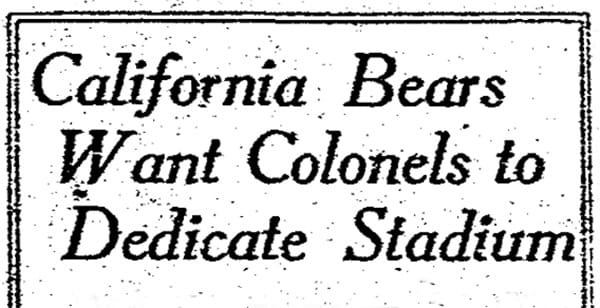
It was from Luther C. Nichols, graduate manager of the California "Bears."
Uncle Charlie said that he didn't know if Centre could accept the invitation.
"But isn't it wonderful that my boys are so appreciated that a big school like California wants them to come out and help dedicate their new stadium?"
( The University of California Memorial Stadium was originally to have a capacity of 60,000, but as Stanford was going to equal that total, the city of Los Angeles chose to build Los Angeles Memorial Coliseum to have an even greater capacity of 80,000, which delayed opening its facility until the "Big Game" against Stanford on Thanksgiving, 1923. Cal prevailed, 9-0.)
